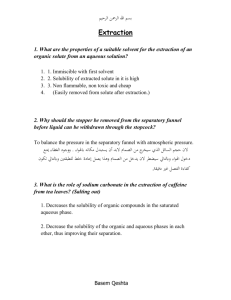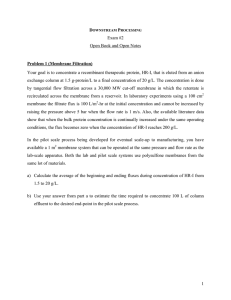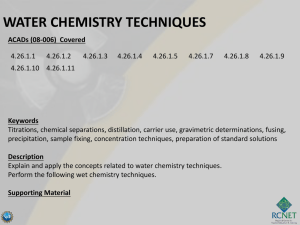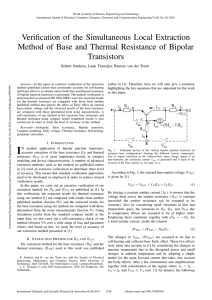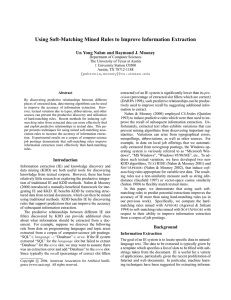D P Problem 1
advertisement
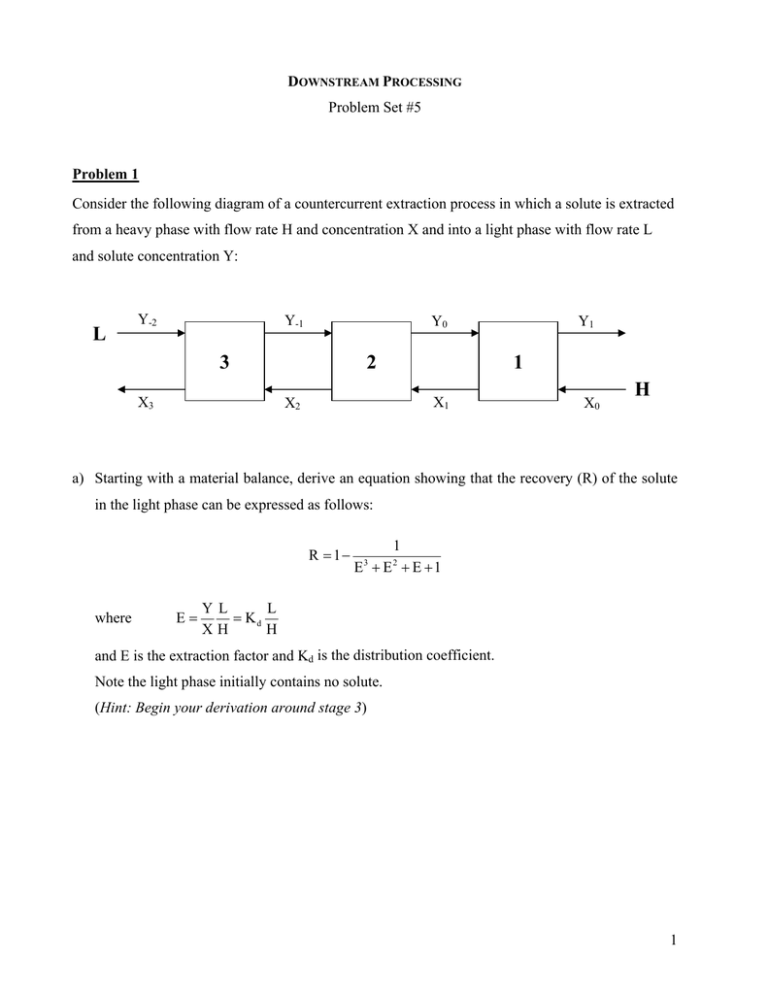
DOWNSTREAM PROCESSING Problem Set #5 Problem 1 Consider the following diagram of a countercurrent extraction process in which a solute is extracted from a heavy phase with flow rate H and concentration X and into a light phase with flow rate L and solute concentration Y: L Y-2 Y-1 Y0 3 X3 2 Y1 1 X1 X2 X0 H a) Starting with a material balance, derive an equation showing that the recovery (R) of the solute in the light phase can be expressed as follows: R = 1− where E= 1 E + E + E +1 3 2 YL L = Kd XH H and E is the extraction factor and Kd is the distribution coefficient. Note the light phase initially contains no solute. (Hint: Begin your derivation around stage 3) 1 b) The sum of the geometric sequence 1 + X + X2 + X3 + X4 + ….. + Xn can be restated as follows: S= 1 − X n +1 1− X Use this formula to show that a general solution to part a for the recovery of a solute from the heavy phase (H) using extraction with a particular number of stages (n) is as follows: E − E n +1 R= 1 − E n +1 c) Plot recovery as a function of H/L ratio for the case in which Kd is 60. What is this maximum H/L ratio that can be used if 99% recovery is desired? Problem 2 A recombinant protein is extracted from a fermentation broth using a biospecific ligand that attaches to polyethylene glycol (PEG). The distribution coefficient (Kd) for the conjugated protein in the PEG-rich top phase is 40 and the volume of the fermentation broth is 1,000 L. Five stages are used in the extraction with the goal of reducing the protein concentration in the broth from 10 g/L to 0.2 g/L. a) Determine the required extraction volume of the PEG-rich phase. b) The concentration factor (CF) is defined as follows: CF = where Cf Ci Ci = the initial concentration of the protein in the broth Cf = the concentration of the extracted protein in the PEG-rich phase If the objective is to obtain a concentration factor of 30 while achieving the recovery indicated in the problem statement, how many extraction stages are required? 2






